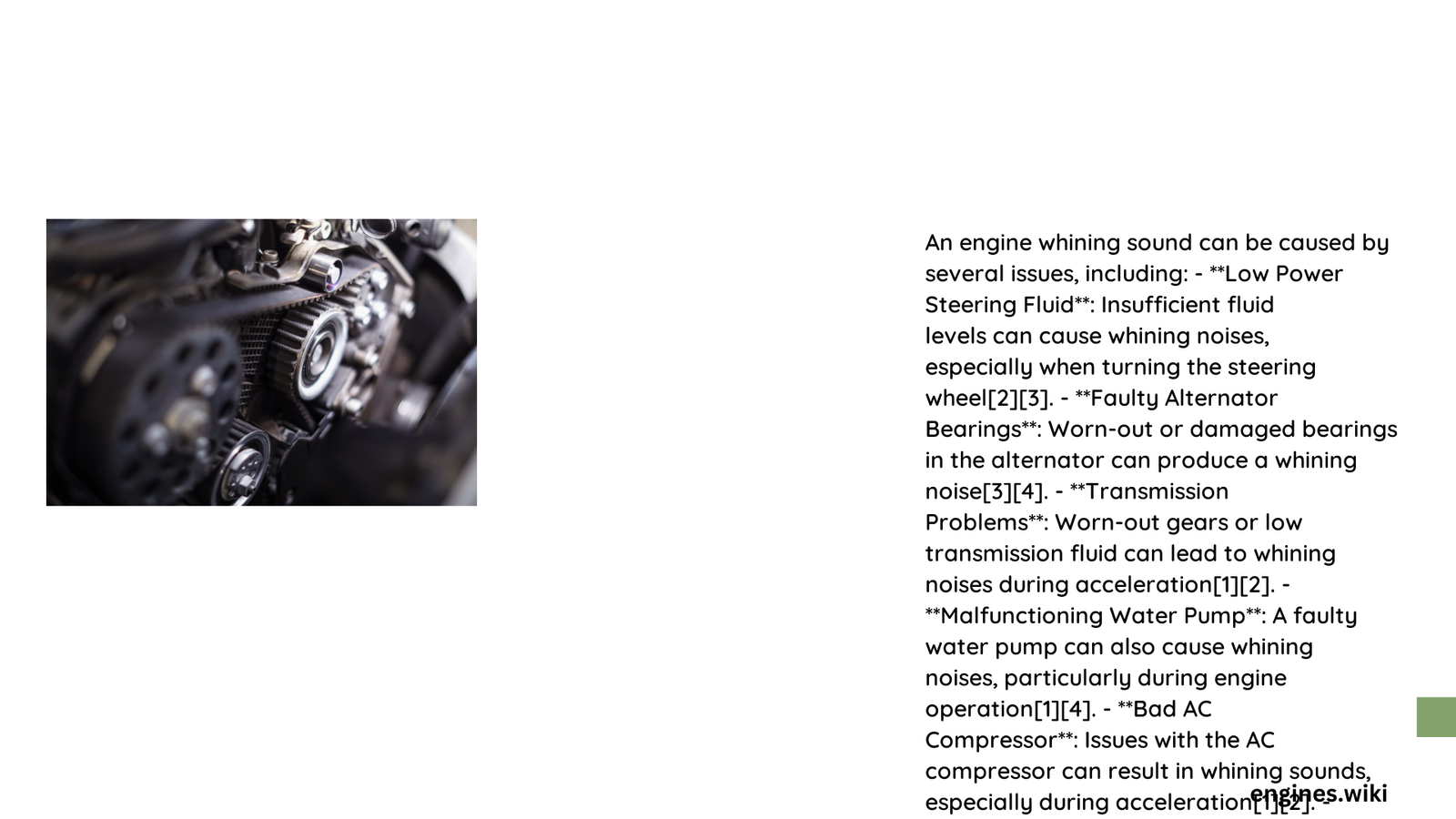Understanding Engine Whining Sound: A Comprehensive Diagnostic Approach
Vehicle owners often encounter mysterious sounds that signal potential mechanical issues. An engine whining sound can indicate various underlying problems, ranging from minor belt misalignments to critical component failures. This comprehensive guide will help you diagnose, understand, and resolve engine whining sounds effectively, potentially saving you thousands in repair costs.
What Causes Engine Whining Sounds?
Engine whining sounds emerge from multiple mechanical sources, each presenting unique diagnostic challenges. The most common culprits include:
- Alternator Complications
- Worn bearings
- Electrical system stress
-
Age-related deterioration
-
Power Steering System Issues
- Low fluid levels
- Pump damage
-
Hydraulic system leaks
-
Transmission Mechanical Failures
- Gear wear
- Fluid contamination
- Internal component damage
Diagnostic Techniques for Identifying Whining Sounds
How to Pinpoint the Noise Source?
| Diagnostic Method | Effectiveness | Time Required |
|---|---|---|
| Visual Inspection | Medium | 30 minutes |
| Sound Frequency Analysis | High | 1-2 hours |
| Professional Diagnostic Scan | Very High | 1-3 hours |
Key Diagnostic Steps
- Listen Carefully: Note noise characteristics
- Pitch variations
- Correlation with engine RPM
-
Consistency of sound
-
Fluid Level Checks
- Transmission fluid
- Power steering fluid
-
Engine oil
-
Belt and Pulley Examination
- Check for visible wear
- Inspect alignment
- Test belt tension
Potential Repair Solutions and Cost Estimates
Alternator Replacement Scenarios
- Minor Bearing Wear
- Cost: $200-$500
- Repair Time: 1-2 hours
-
Success Rate: 85%
-
Complete Alternator Failure
- Cost: $500-$1,000
- Repair Time: 2-4 hours
- Success Rate: 95%
Warning Signs Requiring Immediate Attention
🚨 Critical Indicators:
– Persistent whining during acceleration
– Electrical system irregularities
– Sudden performance drops
– Accompanying warning lights
Prevention and Maintenance Strategies
Proactive Maintenance Checklist
- Regular fluid checks
- Annual belt inspections
- Timely component replacements
- Professional diagnostic evaluations
Expert Recommendations
- Never Ignore Persistent Sounds
- Conduct Regular Maintenance
- Use High-Quality Replacement Parts
- Consult Professional Mechanics
Cost of Neglect: Potential Damage Scenarios
| Ignored Issue | Potential Damage | Estimated Repair Cost |
|---|---|---|
| Alternator Failure | Electrical System Collapse | $1,500-$3,000 |
| Transmission Damage | Complete Replacement | $2,500-$5,000 |
| Power Steering Failure | Steering System Replacement | $800-$2,000 |
Conclusion
Understanding and addressing engine whining sounds requires systematic diagnostic approaches. By recognizing early warning signs and implementing proactive maintenance, vehicle owners can prevent costly repairs and ensure optimal vehicle performance.

